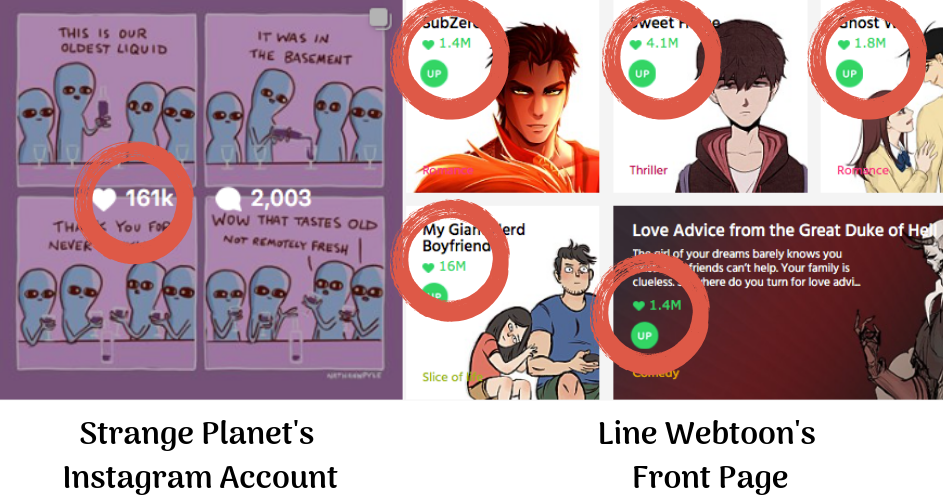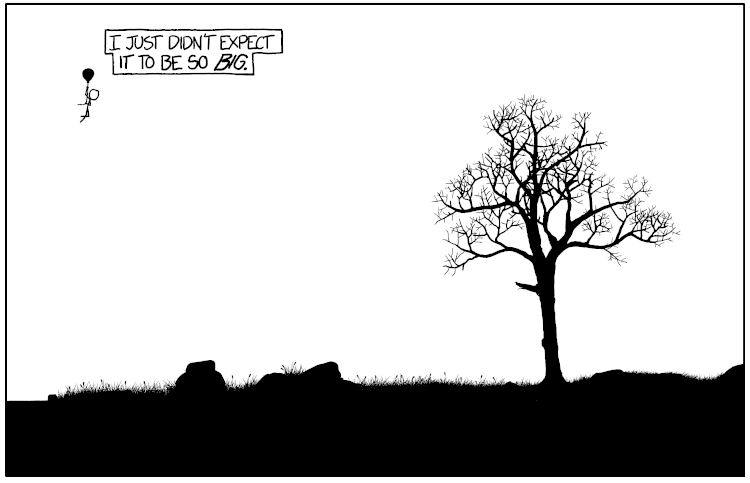Last week, a great article by Peter Rubin popped up on Wired.com: Why 4-Panel Comics Now Dominate Our Screens. In this examination of ‘What makes a webcomic go viral’, Rubin posits that:
Four-panel strips have been a fixture since early 20th-century newspaper comics like Mutt and Jeff and the concomitant appearance of yonkoma (“four-cell”) manga in Japan. It’s the perfect three-act-structure: You start at one end, develop conflict in the middle two panels, and resolve with a punch line at the end. But thanks to a number of factors—not least of which is the rise of Instagram and Reddit—a gridded, two-by-two variant has come to dominate the internet.
Peter Rubin, wired.com
Whilst Rubin’s article is clearly well-researched and definitely bags the incredible and recent cultural phenomenon which has been the Aliens from Nathan W. Pyle’s Strange Planet (the erstwhile E.T’s were originally planned to feature in this week’s blog post themselves!), I keenly felt Rubin’s omission of the greatest rival to this ‘dominant’ form: The Infinite Canvas.

Although 4-panel cartoons might be a tried-and-true stalwart of the webcomics genre, the impact of the Infinite Canvas on the digital evolution of comics has been recognised for decades. In his critically-divisive Reinventing Comics, published in the year 2000, comic legend Scott McLeod not only coined the term but foresaw the ‘unique’ potential of comics on the web to employ this method of presentation. At the time of Reinventing Comics, the notion of the Infinite Canvas being a serious contender against the traditional panel-by-panel presentation – more easily reproduced in purchasable printed volumes – was almost laughable, and derided as ‘cuckoo-land’ thinking (Gary Goth, The Comics Journal #232). However, the following decade would see one more technological development in particular which would change everything in the way comics could be presented online.
Hello? This is your Smartphone calling…

On the 29th of June 2007, the iPhone was unleashed on the world – and ‘scrolling’ became part of the vernacular which has defined our lives ever since.
More than even that, the ease of scrolling on our devices – forever increasing in size and capabilities – irrevocably altered the way in which we interact with the internet. Mobile-responsive design became the watchword for effective website building, and if you couldn’t scroll beyond the digital fold with the ease of flicking your thumb then, well, that content might as well not exist.

The arrival, and subsequent explosion, of smart mobile devices took the Infinite Canvas from the niche artistic choice it had been, to a viable and accessible way of presenting content online. Now, the technology existed to facilitate infinite scrolling anywhere, on any site and – crucially – was optimised for the very devices more and more people were choosing to view that content on. And thus, enter:
All Bow To The Amazon of Webcomics
Line Webtoon, the South Korean-based hub for all things webcomic, officially launched its English site in 2014. Although for its first couple of years the website glided somewhat under the radar of the mainstream Webcomics community (the Western one, at least), from around 2016 the website expanded to seemingly host every second webcomic out there.

Apart from slowly collecting every webcomic present on the ‘net, Webtoon’s defining feature is its near-exclusive use of the Infinite Canvas. Optimised for the vertical scrolling of mobile devices, Webtoon’s presentation is remarkably effective – so much so that many new comics are being designed specifically with that format (and platform) in mind. Webtoon has even featured original comics from the co-creators of Deadpool, and had signed Stan Lee himself to design a new comic specifically for the site – all in the Infinite Canvas format, of course. And with over 17 million monthly users, it’s no wonder the site has become a hotbed for that kind of talent.

Whilst there’s no doubt that the 4-panel format lends itself nicely to the viral formula of Social Media, I think we can all agree that as far as ‘domination’ goes, the Infinite Canvas – and particularly it’s expression through the screens of our mobile devices – is still in the fight yet!
How do you prefer to read your webcomics? Do you like the safe and secure boundaries of the traditional 4-panel format? Or do you prefer the unbounded freedom of the Infinite Canvas? Let us know in the comments below, or on Facebook and Twitter and until next time, always remember – don’t eat the clickbait!
